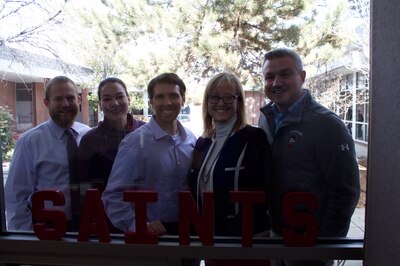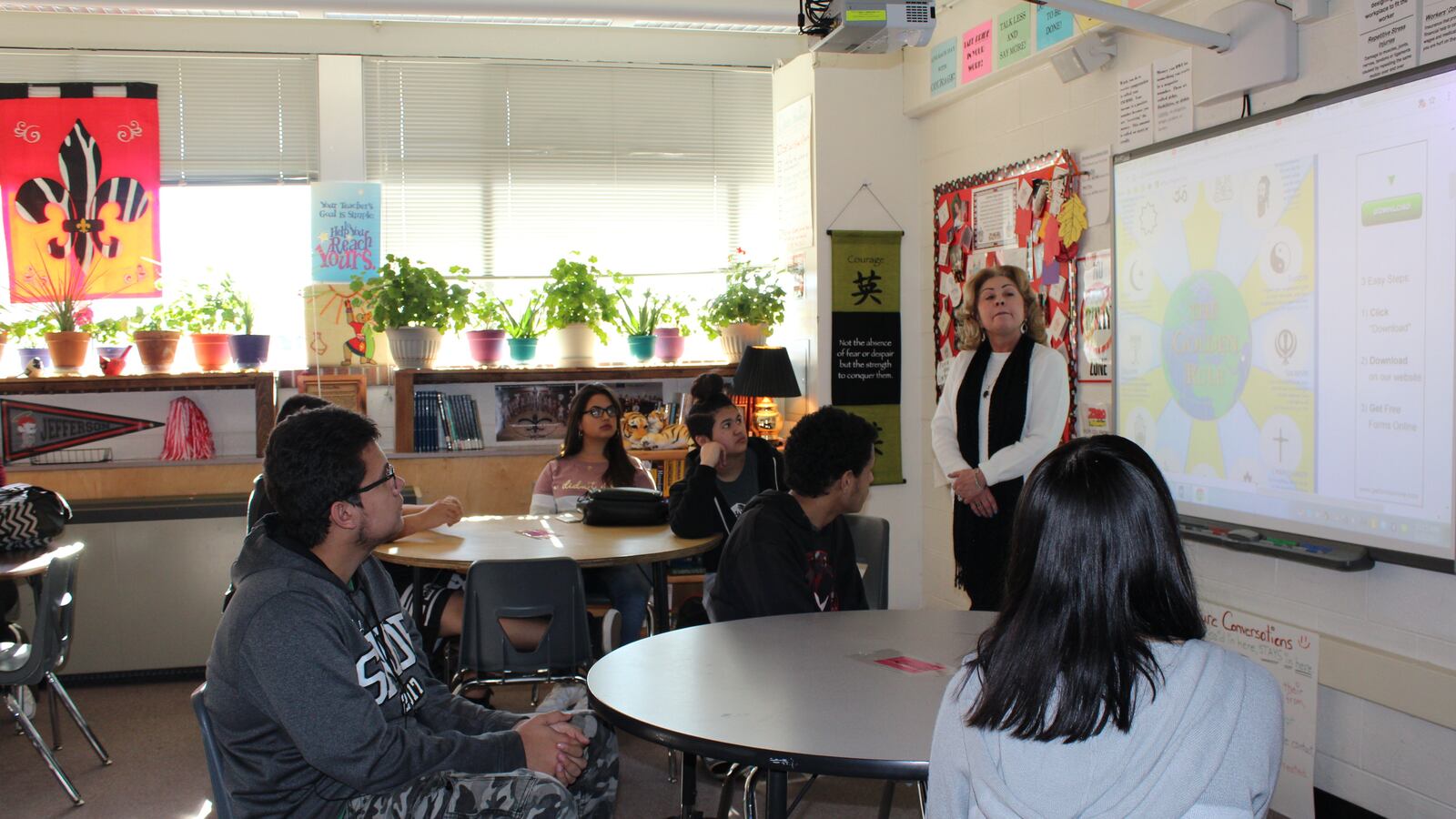The teenagers that made up the Class of 2016 at Jefferson Jr./Sr. High School weren’t much different than students who had come before them.
A lot of them qualified for government-subsidized lunches, an indicator of poverty. For many, English was a second language. Some had switched schools multiple times.
This group, however, distinguished itself by one important measure — graduating on time.
Eighty percent of Jefferson Jr./Sr. High School seniors last school year graduated in four years — a much higher percentage of students than in past years. The Class of 2015 had a 64 percent on-time graduation rate, making for a stunning turnaround.
The Colorado Department of Education released graduation rates last week showing the state reaching a six-year high while local districts in the metro area saw increases and two posted some drops. The Jefferson County school district had a graduation rate of 82.8 percent in 2016, virtually unchanged from the 82.9 percent rate in 2015.
At Jefferson, school officials credit their jump to changes made during the Class of 2016’s sophomore year, when new school leaders arrived to try new ideas for improving the school.
The changes included adding dual language classes, increasing teacher training and adding more advanced coursework.
“This particular class was with us for three years,” said principal Michael James. “The consistency (enables) kids to feel connected to the programming, to the teachers, to the staff, to our expectations. To a point where it becomes a part of them and they’re able to buy into what we are doing. If you don’t start those practices and start those expectations early, you’re already behind for graduation.”
Last year the school was transformed from a high school to a school serving grades seven through 12. That means staff at Jefferson can start working with students even earlier — up to six years before graduation.
School staff also say the work to change school culture helped bump up graduation rates. At Jefferson that meant adding rules to keep students from roaming the hallways during the day and changing the back-to-school nights to engage more parents, among other efforts.

Back-to-school night at Jefferson now resembles a carnival with bouncy castles, drummers, mariachi band and a barbecue.
“It’s just non-traditional,” said Amy Alvarez, an assistant principal at Jefferson. “We think of what’s the goal, and for our community it’s getting them into the building so they feel safe. It’s not so much about getting the school supply list for chemistry. It’s a very different goal.”
At the time the changes started, Jefferson High was one of Jeffco Public School’s lowest performing schools. Even with the graduation increases of this year, the school remains one of the district’s lower performing among traditional district-run schools.
Limited state test results are available for the school. For privacy reasons, the state obscures some data when fewer than four students fall into an achievement category — which happened frequently in Jefferson’s case. But from 2016 results that are available, only 3.2 percent of eighth-graders taking the English tests, and 3.2 percent of seventh graders taking the math test scored proficient or advanced.
School officials say district-level testing data show students are making significant growth since August 2015, especially in reading.
Test scores from juniors in Jeffco taking the ACT in 2015 averaged 15.6, slightly lower than the average of 16.1 for the juniors who took the test in 2014. The juniors who took the test in 2016 — the class that would be graduating this spring — had an average score of 16.
Rhiannon Wenning, who has been teaching juniors and seniors at Jefferson High for 15 years, said teachers have not changed how they pass students and said they are strict about making sure students only graduate if they are ready.
“I think most definitely they are prepared,” Wenning said. “It’s been a systematic growth.”
Wenning credited new teacher training and planning efforts, more consistency in working with English language learners and better parent engagement.
In addition to the more popular back-to-school nights, Jefferson High officials created a “Parent University,” where parents are invited to a discussion once a month about topics related to parenting and family well-being. Jefferson and other schools in the area are also working with the Edgewater Collective, a community nonprofit that is helping connect families to outside resources and bringing more volunteers into schools.
Grants have also helped the school add after-school activities and support staff. James used grant money to hire a teacher for a class at Jefferson called “community living.” One recent morning, students in the class were discussing words they live by, trusting their gut and making good decisions.
Students at Jefferson are being taught to become more responsible for their learning, James said, leading their own parent-teacher conferences because they are expected to know how they’re doing and any credits they’re missing.
James’ team also changed summer opportunities. Students who are missing credits are required to take classes over the summer, but the school also started offering summer classes to students who just want to get ahead so they can enroll in advanced courses during the school year.
JoAnn Euler, an assistant principal at Jefferson, said the number of students participating in Advanced Placement courses increased substantially starting with the Class of 2016.
Even if some students don’t score high enough to earn college credit, the class raises expectations for students, school officials say.
Other measures such as attendance rates and teacher retention rates are also increasing at Jefferson, making officials cautiously optimistic that the new higher graduation rates will hold or continue to climb.
“We’re so excited,” James said. “To increase 16 percentage points in one year is unreal. It gives us great hope.”

